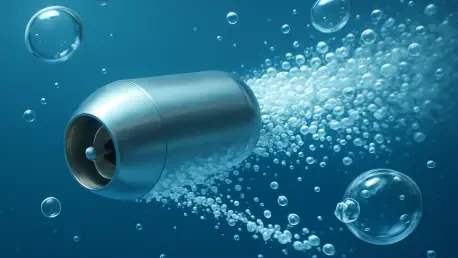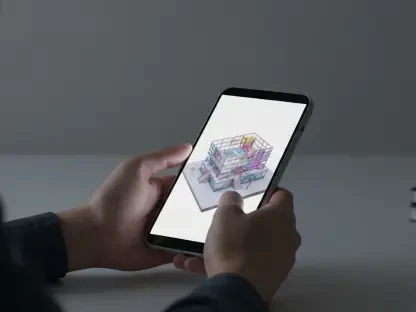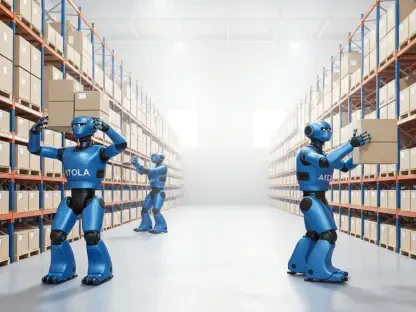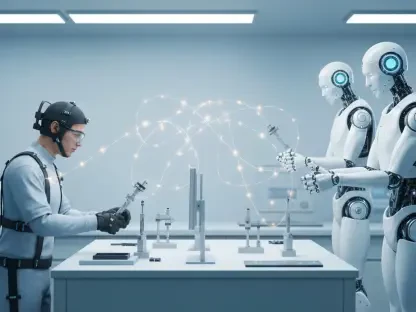Dive into the fascinating world of micro-robotics with Oscar Vail, a technology expert renowned for his groundbreaking work in quantum computing, robotics, and open-source innovation. With a career dedicated to pushing the boundaries of what’s possible, Oscar has been at the forefront of a revolutionary project that harnesses the raw power of collapsing bubbles—a phenomenon known as cavitation—to propel tiny robots. In this interview, we explore the science behind this cutting-edge propulsion method, the natural inspirations that fueled its development, and the incredible potential it holds for applications ranging from medical drug delivery to precision engineering. Join us as we uncover the challenges, breakthroughs, and future possibilities of this awe-inspiring technology.
Can you break down what cavitation is and how it generates such incredible energy for tiny robots?
Absolutely, cavitation is a pretty wild phenomenon. It happens when a bubble forms in a liquid, grows rapidly, and then collapses just as fast. That collapse creates a massive burst of energy because the bubble implodes with such force—it’s like a tiny explosion. The pressure and heat generated in that moment are intense, sometimes reaching thousands of degrees and pressures akin to what you’d find deep in the ocean. For our tiny robots, we tap into that energy release to launch them with remarkable speed and power, far beyond what traditional systems could achieve at this scale.
What sparked the idea to use cavitation as a propulsion mechanism for robots?
The inspiration really came from observing nature. We were fascinated by how certain organisms, like ferns and mantis shrimps, use cavitation in their own unique ways. Ferns, for instance, catapult their spores using this process, and mantis shrimps create powerful shockwaves to stun prey. Studying these natural systems made us realize that cavitation could be a game-changer for micro-robotics. It’s a naturally occurring, high-energy process that we could adapt to create propulsion systems far more efficient than anything mechanical at this size.
How do these bubble-powered robots, which you’ve called ‘jumpers,’ actually function?
The jumpers are millimeter-sized devices made from materials like titanium dioxide and titanium carbide, chosen for their ability to heat up quickly and withstand the stresses of cavitation. When we hit them with a laser, the heat causes the surrounding liquid to vaporize, forming a bubble. That bubble expands and then collapses almost instantly, releasing a burst of energy that launches the robot. We’ve seen them jump 1.5 meters into the air at speeds over 12 meters per second, which is pretty astounding for something so small. It’s a testament to how much kinetic energy cavitation can impart.
I understand you can control the direction and distance of these jumps. How do you achieve that level of precision?
Control is key for practical applications, and we’ve managed it by adjusting where the laser strikes the robot. By targeting specific points on the device, we can influence the angle and force of the bubble collapse, which in turn dictates the launch trajectory and distance. It’s a bit like aiming a tiny cannon. We’ve also experimented with other triggers like ultrasound and electrical sparks, which offer different ways to fine-tune the process depending on the environment or application. This flexibility is what makes the technology so promising.
You’ve also developed ‘swimmers’ that move across water using this technology. Can you tell us more about their design and performance?
Yes, the swimmers are a variation of the jumpers, adapted to move on water rather than through the air. Their design is slightly different to optimize for surface movement, focusing on sustained propulsion rather than a single explosive jump. They achieve speeds of about 12 centimeters per second, which might not sound fast, but at this scale, it’s quite competitive compared to other micro-robots. The cavitation mechanism gives them a unique edge, allowing for quick bursts of movement that are hard to replicate with conventional designs.
What advantages does cavitation-based propulsion offer over more traditional systems for tiny robots?
Traditional systems, like spring-based mechanisms, often struggle at the micro-scale because they can’t store or release energy efficiently enough. Cavitation, on the other hand, delivers an instantaneous burst of power that’s incredibly effective for small devices. It’s not just about raw energy—it’s the speed of release that matters. This allows our robots to achieve accelerations and movements that would be impossible with springs or other mechanical systems. Plus, the simplicity of triggering it with something like a laser means fewer moving parts, which is a huge win for reliability at this size.
Looking ahead, what are some of the most exciting potential applications for this bubble-powered technology?
The possibilities are honestly thrilling. One area we’re particularly excited about is medical applications, like using these robots for painless drug delivery inside the body—potentially replacing needles. Beyond that, they could be used for precision tasks in electronics, assembling tiny components, or even inspecting and repairing hard-to-reach areas like pipelines. While we’re still in the proof-of-concept stage and face challenges like biocompatibility and control in complex environments, the potential to revolutionize fields from medicine to engineering keeps us motivated.
What’s your forecast for the future of cavitation-based robotics in the next decade?
I’m incredibly optimistic. I think we’ll see major strides in refining control mechanisms and materials, making these robots viable for real-world applications within the next ten years. As we overcome current hurdles—like ensuring safety and precision in biological systems—I believe cavitation could become a cornerstone of micro-robotics. We might even see hybrid systems combining cavitation with other technologies for even greater versatility. It’s an exciting time, and I think this field will surprise us with innovations we haven’t even imagined yet.









